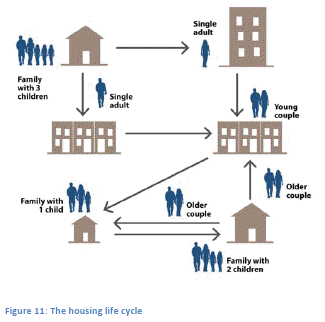Continued from Works In Progress: III
I had a great discussion with the geonerds a couple weeks ago (on my new public twitter account @Brobdingnag). It really helped me to narrow down what kind of map I want to make, and how it is (or isn’t) related to crime. Click the timestamp to see (most of) the discussion:
@enf @mizmay Is there an app that takes crime stats into account for walking directions? http://t.co/S0TOhUWVSv any tips for making one?
— Dr O (@ofurhe) July 15, 2013
Like everything, it’s much more political than I expected. As Stephanie May asked ‘Do you want to avoid crime or homeless people?’ Right now I’m more interested in perceived threat (feeling of safety) than actual crime*. The most walkable neighborhoods are going to be higher in crime since high density is correlated with high crime. That said, I still think you can pinpoint particular ‘sketchy’ corners and try to avoid those particular corners or blocks, the kind of things that locals know, and tourists might not. I’m not talking about avoiding whole neighborhoods, just walking down Valencia instead of Mission. I still think the appeal of the map would be that it’s dynamic, it wouldn’t put a permanent bad stamp on a neighborhood or corner.
I made a quick list of potential data sources:
- city crime stats on: Robberies (muggings) and Prostitution
- Also include Quality of Life offenses like vagrancy/public urination/graffiti/vandalism/noise
- crowdsourced data from walkscore.com
- Google image survey like this Atlantic Article
- paths taken by women vs men
- Simple Property Values from Zillow or Trulia
One of the things we talked about was the gendered nature of this perceived safety; that there are places where a man might feel safe enough, and a woman might not. This is related to my street harassment post, there are neighborhoods such that if I was walking around alone at night and got mugged/raped people might first ask ‘what were you doing alone in that neighborhood?’ rather than ‘are you okay?’ It would be interesting to try show the nature of this difference.
Also, some interesting stuff on the street harassment front the other week. Came across this great blogpost on racialized street harassment on the new hairpin spinoff blog The Toast:
Mea Culpa
and got a into an interesting discussion regarding the Jezebel article:
But Where where are you Really from? (again, click the timestamp for more of the discussion):
https://twitter.com/jazzyvice/status/360611906509217796
When is it a compliment and when is it harassment? Sometimes it’s hard to know.
Still trying to figure out the best way to start on this map and the smartest way to approach some of these issues without sounding obtuse or idiotic (and still maintaining the shred of street-cred I may have). I’ve been reading about Feminist Geography (a subject I never really understood until now), particularly Katherine McKittrick and feel I may have found my niche in the field (for the time being).
*I am the first to admit there are controversial and problematic aspects to this map, so many, in fact, that I don’t know where to start. I’d like to address these in a delicate, thoughtful and well-informed fashion, but they are hot-button issues or race/gender and fear. Don’t think I’m not going to deal with the difference between actual and perceived threat, especially given the recent Trayvon Martin verdict. As a black woman I do not think myself exempt from racial profiling, though obviously, it’s complicated. There are affluent white neighborhoods I don’t want to be around at night because people will think I’m a thief in a hoodie, or, depending on what I’m wearing, a prostitute. Saw this really interesting article on Trayvon Martin and perceived threat:
Gender Justice Feminism
